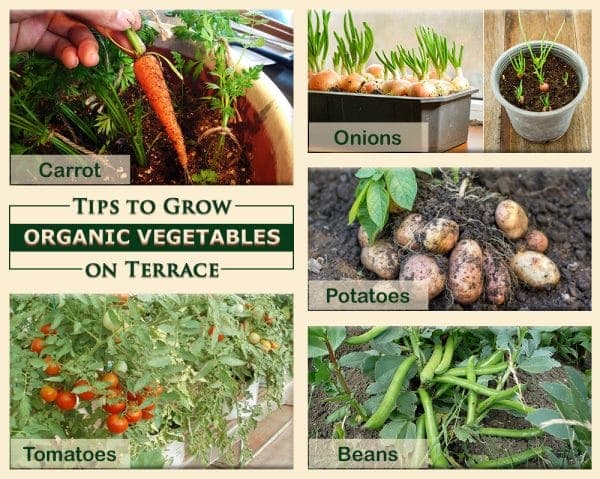
Buying organic vegetables and having them in daily diet is indeed a bliss. But buying organic products is costly enough, especially when you are buying from an authentic outlet. But where there is a will, there is a way. You can get to add organic veggies in your daily diet if you know the tricks of growing organic vegetables in your kitchen garden.
Isn’t it interesting to know about budget management and quality management of your food at one go? If you love the idea and interested to grow organic vegetables at home, read here to know more.
When you live in a big city, often the biggest constraint at home is the lack of space. Most apartments do not have any space like yards, with bungalows or you may have just a tiny terrace. Organic farming is becoming popular these days. It is an ideal urban scenario where there is no space left for agriculture. Terrace gardening adds value to your garden. It is an ideal way where you can grow organic vegetables in an environment-friendly way. To know more about the aspects of the organic terrace gardening, watch this documentary by Shramajeevi. (It is a Visual Media Production House dedicated to agriculture).
A small space in your home is pretty enough to make a kitchen garden for growing organic vegetables. It is amicably possible to have a nice vegetable garden on a slice of the terrace or in a narrow balcony. But before we talk about that, let us talk about how the pots are prepared for gardening.
How to Prepare the Pots?
Before you plant the seeds, you must prepare the terrace garden pots with the right soil mix. You should select well-aerated, well-drained soil with neutral pH. Soilless potting mixes are the right choice for terrace garden. They mostly contain compost, peat moss, coco peat, and bark chips to provide plant nutrients and a healthy pH balance for the home-grown vegetables. You can make this mix at home or you may buy it ready-made from a nursery.
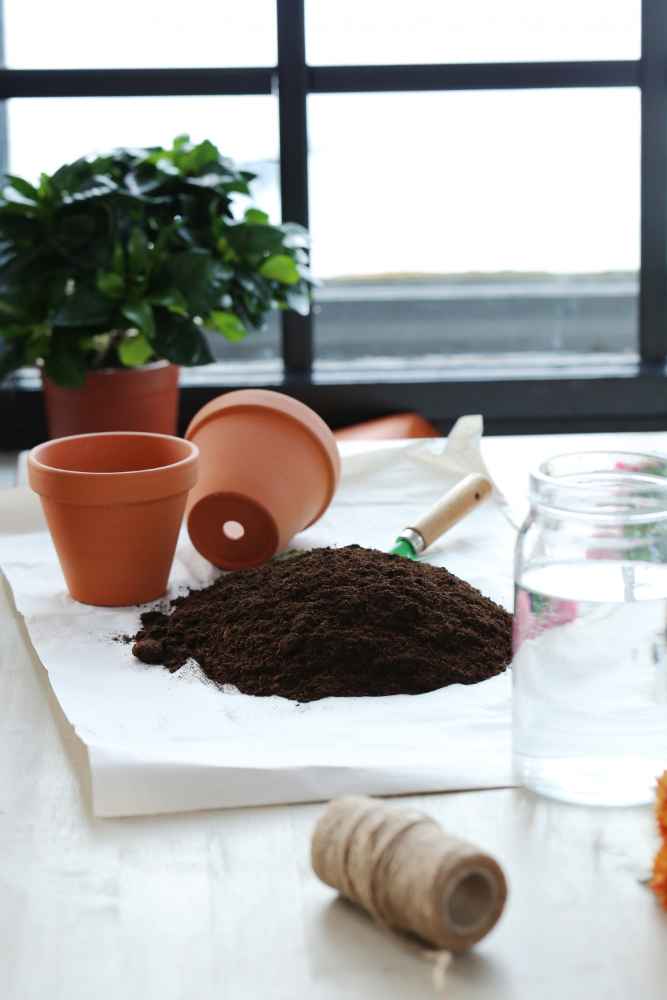
Whichever soil mix you choose, (readymade soil mix or your mix) a large pot will need a large amount of soil to fill it. Add some filler at the bottom of the pot, like small pieces of foam, or cups of yoghurt turned upside down or pieced thermocol. And of course, do not forget to make a small hole at the bottom so that adequate drainage is maintained. As remarked by ‘Pippa Greenwood’ (Author of 10001 Hints & Tips for the Home)’ adequate drainage is just as crucial to healthy container plants as adequate watering is needed to care for a plant.
You should fill up to a bottom one third of the pot, then lay down some landscape fabric over the filler, and finally the soil mix, leaving one inch of space at the top. This potting trick can be applied for almost all veggies in your organic garden.
Growing Five Organic Vegetables
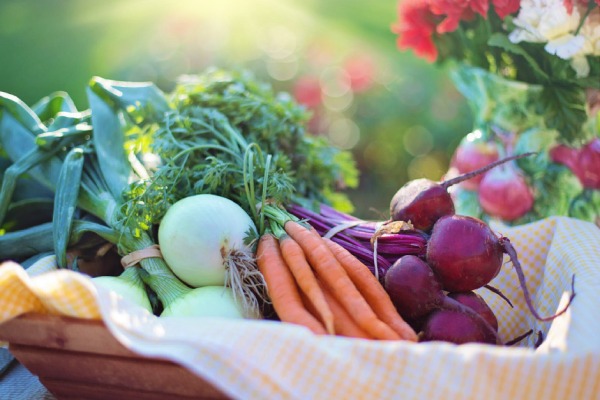
Let us tell you about five easy garden vegetables that you can grow in a small terrace garden.
01. Carrots
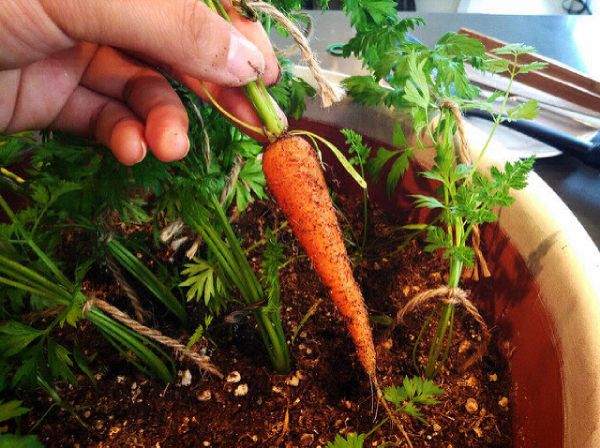
If you have a planter or a pot that has no rocks and has enough depth to grow, you may try growing carrot. The pot should be at least 12 inches deep and relevantly as wide as possible. Rocky soil makes the carrots crooked and bent, and even though you can eat them, they are not much to look at.
Remember to harvest the carrots when you can see the tops above the soil line. There are different varieties of carrots you can try growing like Thumbelina, little fingers, short and sweet, and so on. Do not forget to water them regularly for healthier harvest. Bigger your pot, the longer your planted carrot can grow.
02. Beans
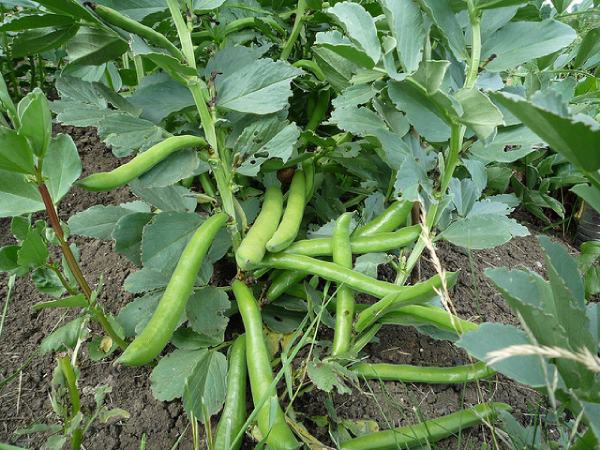
Beans come in different varieties, but the easiest ones to grow are “broad beans”. Pole beans also grow easily, but you will need a trellis to grow them. But it is easy to grow no matter if you are an amateur in your balcony or terrace. Bush beans grow in abundance, but the easiest to manage is broad beans. You can freeze beans for later use and can use them instantly as well. If you opt for bush beans, the two best varieties are “provider” and “derby”. Try and select a pot that is at least 12 inches deep to get best crop in bean variety.
03. Tomatoes

The best thing about growing tomatoes is that they do not need a spacious garden to flourish. You can grow them in planter pots, hanging pots, window boxes, or even in almost other container types. Most of them grow throughout the year and these are hardy plants. Just ensure that the pots are at least 18 – 24 inches in width.
Tomato pots need little water and lots of sunlight. All that you must ensure that the container has enough space for the plant to allow it growing lavishly. Try your hand with tomato seeds, or starter plants, whichever is your preference. Some people opt for starter plants from nurseries as these are an easy way to start growing them. You can add a cage around the outside of the pot for supporting the plant as it becomes taller often. Rich in nutrients and vitamins, you will love adding freshly picked tomatoes to your meals. Choose from Beef Steak, Big Boy, or Roma tomatoes.
04. Potatoes
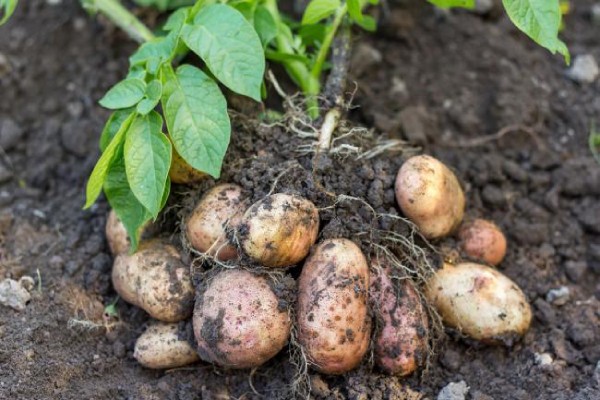
We use potatoes in our meals in many ways – boiled, fried, baked, and so on. The good news is that they are quite easy to grow in pots with little care. Choose a pot that is about 10 to 12 inches deep and you can plant three to four potatoes in this pot. Potatoes need the right amount of water, so you can go for plastic containers that retain water better. It is essential to water them enough so that they thrive and start producing in a short while. Also, cover their stems with enough soil and watch them grow within two to three months.
05. Onions
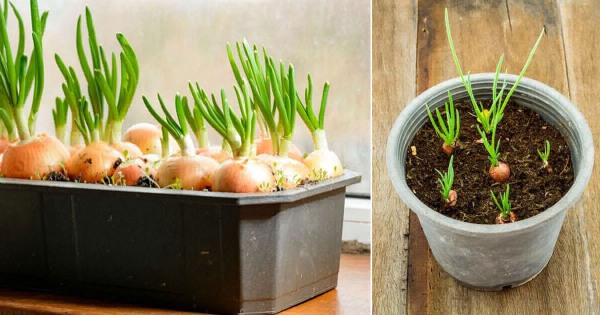
Onions are kitchen staples in terms of vegetables. You can make delicious salads or use them to spice up your curries – there is no end to the ways you can use onions in your food. Wouldn’t it be convenient to grow them at home, and use them whenever you need to?
Well, onions are small in size, and they can easily fit in spaces like a terrace or a small yard. Green onions grow well in small pots. Take a five to six-inch-deep pot and plant them to raise them with ease. As remarked by ‘Pippa Greenwood’ (Author of 10001 Hints & Tips for the Home)’ most onion bulbs need sunlight, so plant it accordingly and select the right spot for growing your organic onions.
The Benefits of Growing Vegetables
There are many benefits of growing organic vegetables but let us talk about the top three benefits here:
01. The Value of True Nutrition
The vegetables grown for commercial purposes are often grown in inferior and sub-standard soil and they use harmful chemicals and fertilizers. When you are growing vegetables in your kitchen garden you are not compromising on its natural quality and therefore these veggies are full of their food values in terms of nutrients.
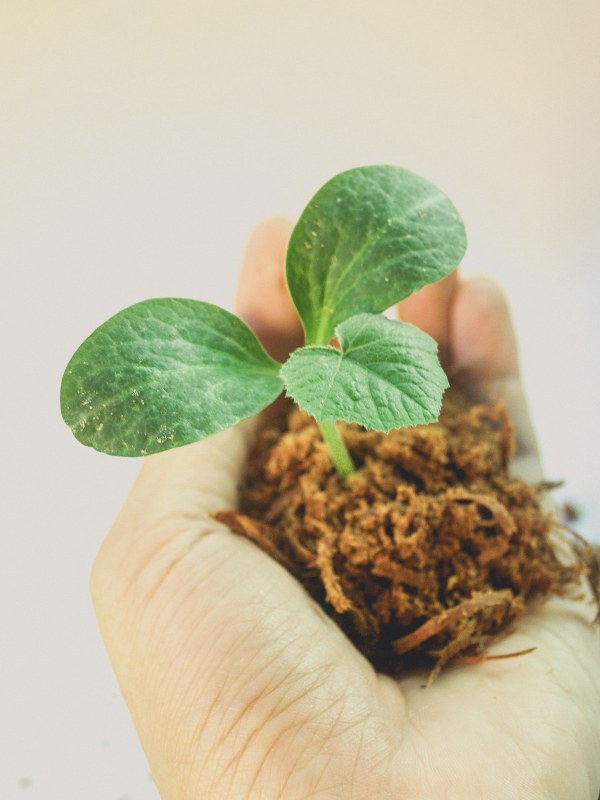
You get proper nutrition from vegetables that are homegrown on healthy soil without the use of chemicals, and when you eat them soon after picking. This is only possible if you grow them at home in organic way.
02. No Harmful Pesticides
In order to grow vegetables on commercial basis farmers often use pesticides and chemical fertilizers. Chemical fertilizers may affect the fertility of the land and it may make the plants weak. Farmers use pesticides, which often affect the soil negatively, and this again weakens the plant more. If vegetables bought from the market are examined, you will find traces of these pesticides in all of them. If you grow your own vegetables in the organic method, you can get rid of consuming these pesticide laden vegetables.
03. Better Taste
Everyone knows that organic vegetables taste a lot better because they are grown without using any artificial methods. You will find homegrown vegetables to be tastier, flavorful, and more nutritious. Most of them can be eaten raw to derive the maximum benefit out of them.
Conclusion:
So, what are you waiting for? Buy planters, pots, seeds, soil, and organic compost and start a garden that will flourish and provide you with the freshest of produce for your dining table. Enjoy fresh and organic vegetables for yourself and your family! Stay healthy inside and outside!
Also Read:
10 Best Air Purifying Plants to Clean the Air in Your Homes!
Choosing the Right Flowers for your Garden | Flowering Plants
Landscaping Design Ideas that your Neighbours will Imitate!
Image Courtesy – Image 3, Image 4, Image 5, Image 6, Image 7
Author Bio
Indrani Ghosh – In the fourth decade of my life, I decided that I needed something more. I needed to tell everyone my story, but in a way that people would read it. So I have become a part-time writer. My main profession is that of a technical writer and I have been part of the IT industry for 19 years now. I have worked for companies like TCS and Ericsson and clients like Johnson & Johnson, Citi Cards, T-Mobile, Visa, and many more. I love my job and have a great passion for life. My husband is my best friend and he is as passionate about life as I am, though in subtly different ways. I am a loyal friend, a skilled professional, a loving wife and hopefully, soon a published author! I am Easily Reachable on – Facebook, LinkedIn.






























